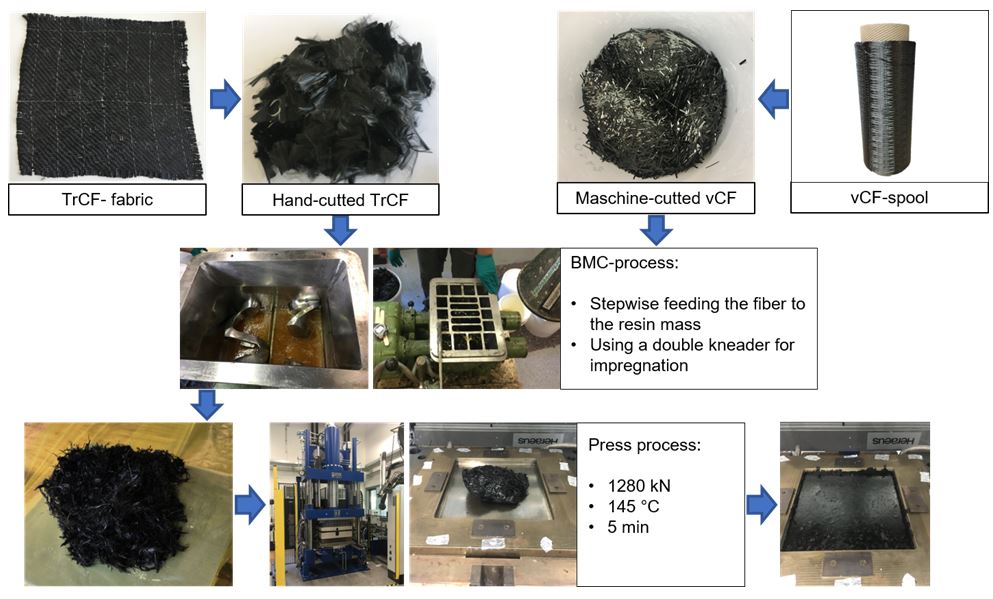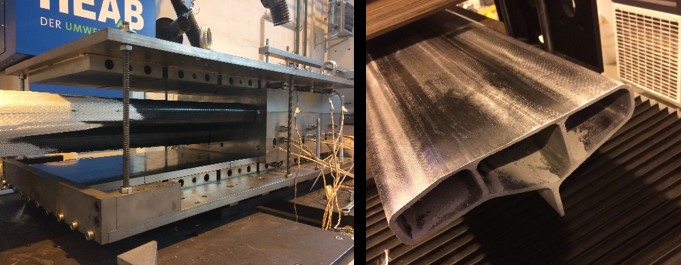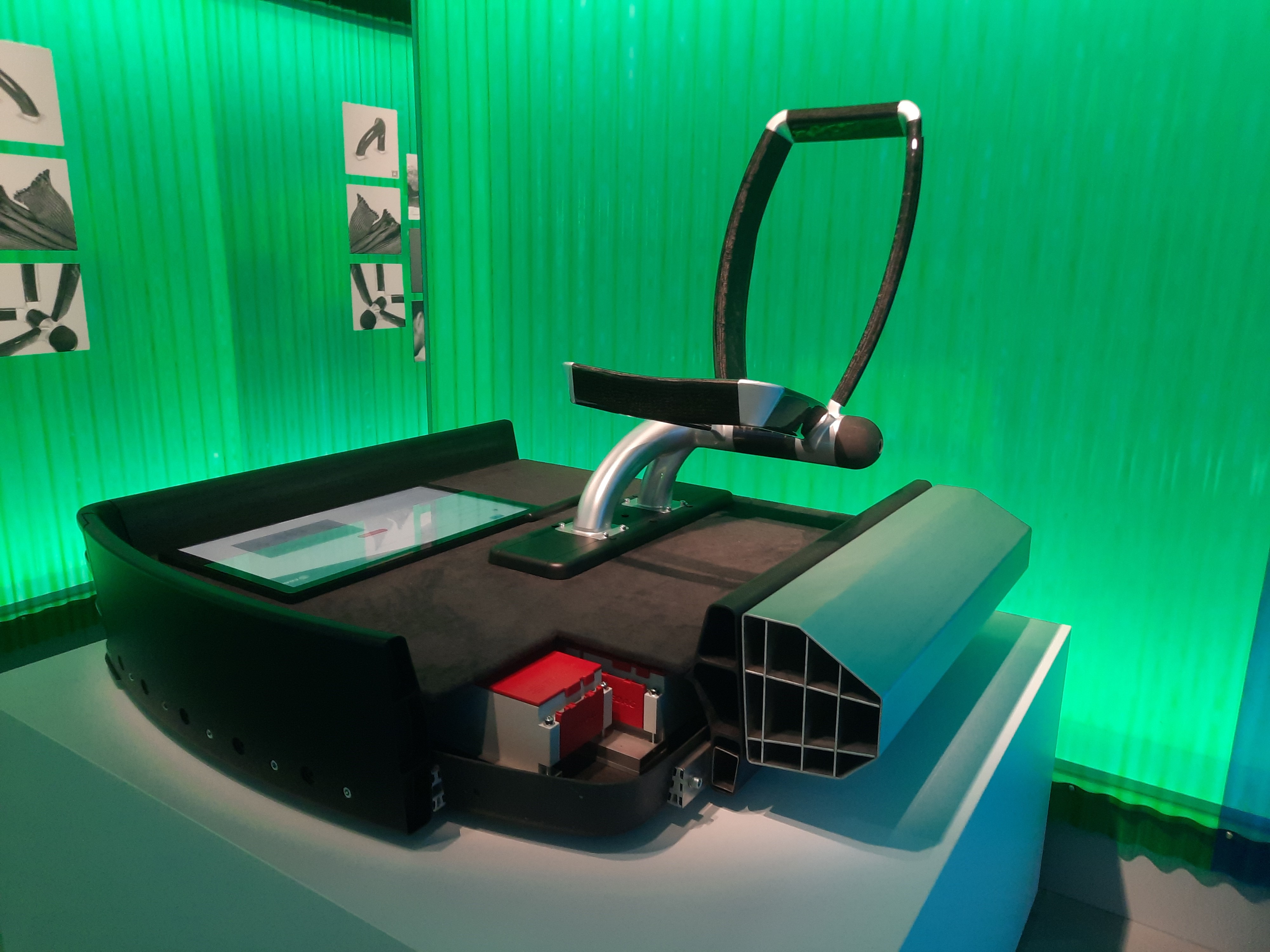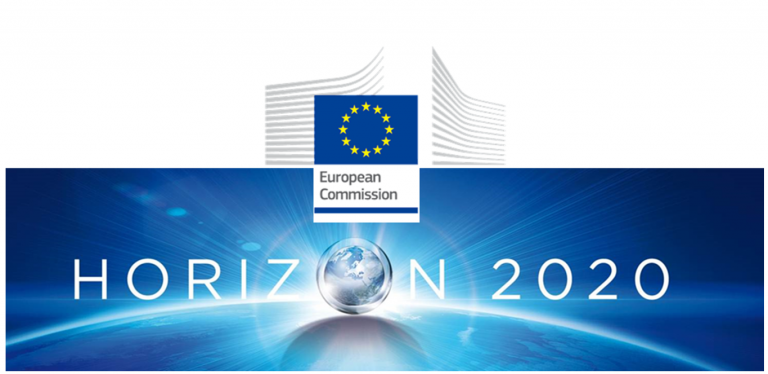Large scale demonstration of new circular economy value-chains based on the reuse of end-of-life fiber reinforced composites



The "FiberEUse" project aimed at integrating different innovation actions through a holistic approach to enhance profitability of composite recycling and reuse in value-added products. Glass and carbon fiber reinforced polymer composites (GFRP and CFRP) are increasingly used as structural materials in many manufacturing sectors but the recycling of these materials is still a challenging task. Although mechanical grinding and pyrolysis reached a quite high TRL, landfilling of EoL composites is still widespread since no significant added value in the reuse and remanufacturing of composites is demonstrated.
The »FiberEUse« project was divided into three different use cases, in which mechanical and thermal recycling as well as the reprocessing and reuse of end-of-life composite components were examined. The main focus of the Fraunhofer project centre was the development of a reusable vehicle base frame and a reusable seat structure made of carbon fiber reinforced plastic in cooperation with the project partners EDAG and INVENT.
This development based on the idea, that after at the end of life of a vehicle, the base frame and the seat structure are dismantled, remanufactured and, if necessary, repaired and then re-assembled with new components to form a new vehicle. Fiber-reinforced plastics (especially with carbon fibers) are ideal for such long-life components due to their corrosion resistance and high fatigue strength. In addition to the development of a special circular design and construction method, various technologies and processes for easy dismantling and subsequent remanufacturing and reuse are implemented and tested.
As a solution for the design, a frame structure consisting of profiles and connecting elements has emerged for both the vehicle base frame and the seat structure. The profiles for the vehicle base frame are manufactured by Fraunhofer using the pultrusion process. The challenges were the profile size, the realization of the complex geometry and the different fiber layers. The connecting elements for both the base frame and the seat structure were made of a carbon fiber reinforced bulk mould compression (BMC) material.
The challenge for the connecting elements is the development of suitable tools for the equally complex geometries and the corresponding process control. As part of the development of the BMC connecting elements, the use of thermally recycled carbon fibers as a reinforcing material for the BMC was evaluated. A first comparison showed reduced mechanical properties compared to a BMC with virgin fibers, but there were various optimization options at the material and process level to improve the properties of BMC with recycled fibers. These optimization options need to be tested and validated in further projects.
Parallel to the conception and construction of the vehicle base frame and seat structure, various technologies for implementing an automotive circular economy are also being developed. This includes special repair methods and automated non-destructive testing methods for the carbon fiber reinforced structures of the seat and base frame. A particular focus is on detachable connections for optimal and non-destructive disassembly. For this purpose, a solution for detachable adhesive connections could be developed and tested as part of the project. This enables a simple mechanism to separate bonds without damaging the joined components.
As a result of the project, a technology demonstrator was created, which represents the concept of the recyclable vehicle platform and seat structure. The demonstrator was presented for the first time at the Milan Design Week as part of a presentation of the entire project.
 Fraunhofer Project Center Wolfsburg
Fraunhofer Project Center Wolfsburg